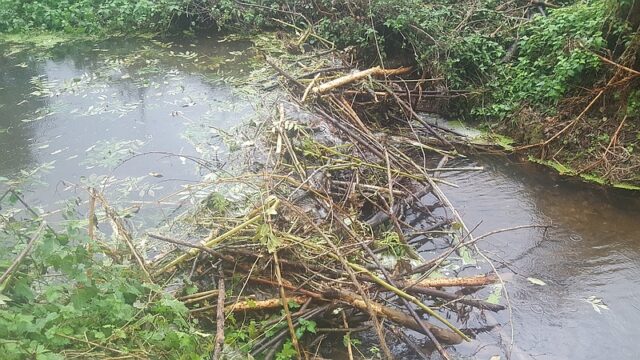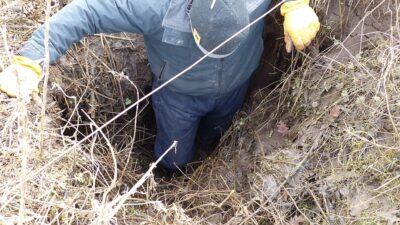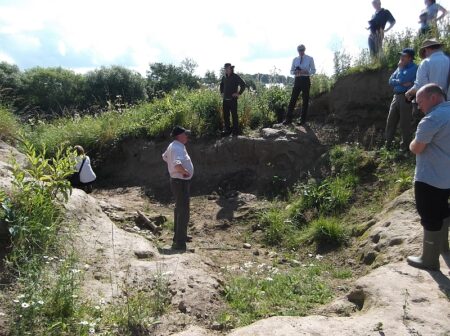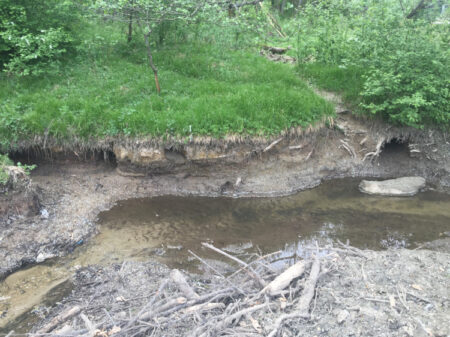Go to our Beaver Resource Hub for more information about beavers.
Introduction
Beavers have captured the public imagination: cute, furry and very clever ecosystem engineers. The ability of beavers to fix man made issues like pollution, flooding and climate change makes for good headlines and simple soundbites. On this web page we will add a little more detail and take a look ‘beneath the surface’, allowing a more nuanced discussion that acknowledges that all the benefits credited to beavers depend on time and place.
Beavers can:
Click the heading above to go directly to the relevant section.
For a more comprehensive review of the impacts of beavers, Beaver: Nature’s ecosystem engineers by Brazier et al.

It is a common misunderstanding that beavers always build dams. They prefer habitat where they don’t need to build dams in order to create the deep, slow moving water they need. Their preferred habitat is a lake or the lower reaches of rivers and their floodplains (typically gradients of 1 – 2%, with stable depths of at least 60cm). They are widely reported not to create dams in rivers more than 10m wide but will burrow into the banks to build a lodge and store food.
When lakes / slow river habitats are fully occupied by beavers, they will colonise narrower watercourses and build dams to create suitable habitat.
Many of the benefits ascribed to beavers only occur once their preferred lowland habitat (often agricultural) is filled with other beavers, and they start to move upstream and build dams, creating the wetland habitats and flood management benefits for which they are so renowned.
See section below for impacts of burrowing.
In England, most beavers have been licenced for introduction into fenced enclosures in ponds, wetlands and small streams. There are wild beavers in rivers in England, notably the River Otter in Devon.
In Scotland, the Knapdale trial took place in lochs.
On the River Tay, the (illegally released) beavers live on the floodplain and burrow as well as build dams.
Beavers improve water quality
Beavers can improve water quality by storing sediment, nutrients and pollutants in their ponds.
The faster a river flows, the more sediment it can carry. Suspended sediment will carry with it the fertilisers, pesticides and other substances that have washed from the fields and roads around the river. Where beavers build dams, the water slows and sediment drops out of the water and accumulates on the bed of the pond. The same process occurs when a river enters a natural or man-made pond or lake, or when there is a natural or man-made barrier (for example, a weir). Nutrient- rich sediment may support aquatic plant growth in the pond. Under some conditions (for example where nutrient levels are already high), algae rather than more desirable aquatic plants may grow. The sediment deposits remain on the bottom of a beaver pond until either the beaver dam collapses (most dams last 2 – 3 years) or the pond becomes full of sediment.
If the beaver dam collapses, at least some of the sediment and pollutants stored in the upstream pond are re-released into the river. If this occurs in a single event, it may be more damaging than the gradual release that might occur without the beaver dam. If the beaver pond dries out, the sediment will eventually become covered in vegetation, in which case the sediment and pollutants are removed in the longer term.
In summary, beavers can filter water IF they build dams and if those dams stay in place for long enough for the beaver pond to dry out and the sediments to be fixed in place by plant roots.
However, the elephant in the river is that those excess nutrients, pollutants and soils should not be getting into our watercourses at such rates in the first instance. Rather than rely on beavers to clean up our water, it is important to prevent sediment and pollution from reaching the river by better farming practices in rural areas and better management of sewage and rainfall water in urban areas.
Beavers reduce flooding
Where beavers build dams, water will be stored in the wetlands and ponds behind the dams. The ponds fill to the depth of water dictated by the height of the beaver dam. Beavers are rather efficient at plugging leaks in dams to maintain water levels (to the 0.6m depth they prefer), so when the ponds and wetlands reach their storage capacity (dictated by the beaver dam height), that’s it — any excess water can percolate through a leaky dam or overtop it and carry on down the stream.
The flood attenuation effect is greater when the shape of the land permits water to be pushed laterally, out of the channel and onto the flood plain. This is one of the many reasons why riparian buffer zones and connection with the floodplain are important.
Flood water attenuation is also increased when beavers build a series of dams rather than one single dam.
Beaver dams are highly variable in construction and hence their ability to hold back water and withstand floods will vary.
Any additional storage provided by ponds and wetlands and the connection of the river with the floodplain will ‘slow the flow’ of flood water, flatten the flood peaks and increase flood duration. In large floods, the dams can be overtopped or ‘blown out’, reducing the flood water storage effect.
In summary, beavers may help reduce flooding IF they build dams. Their ponds and wetlands can help reduce the flood peaks by slowing the flow of water but the scale of this effect depends on how much spare capacity is available in the ponds, the size of the flood, the number of dams and the extent to which a beaver dam can push water onto the flood plain.
How many beavers are needed to have a significant impact on flooding?
According to this draft paper,
‘By using the concept of flood-excess volume (FEV) for four rivers in the
UK, in the context of five (extreme) UK flood events in the last two decades, we show
that even a 10% flood reduction of the FEV, using beaver colonies and beaver dams,
requires hundreds of such colonies per river catchment.’
Further reading:
Beaver dams attenuate flow: A multi‐site studyBeaver dams attenuate flow: A multi‐site study Puttock et al. 2020
Hydraulic Modelling of Beaver Dams and Evaluation of Their Impacts on Flood Events. M. Neumeyer et al. 2019
‘Slow the Flow’ article on beavers and flood management in the Calder valley.
Beavers reduce the impact of drought
By creating dams which result in ponds and wetlands, beavers increase the amount of water stored on the surface and increase the amount of water that infiltrates to groundwater rather than running off along the surface and into rivers. In some locations and geologies, the water table may be raised sufficiently around the beaver dams for the ponds and wetlands to stay wetter for longer during a drought.
The ponds and wetlands will slowly release water into streams and rivers until they dry out and any leaks in beaver dams will gradually release water into the river during periods of drought. However, beavers will be working hard to plug any leaks in their dams with mud and vegetation to keep pond water levels up. This activity can lead to increased turbidity caused by suspended sediment during dry periods.
The greater surface area of ponds and the reduced shade from riparian trees (because beavers have felled them!) can mean that the amount of evaporation from the surface of a pond is greater than would have occurred in the river. Also, the temperature of the water in the pond is higher than in the river, which results in higher water temperatures below the beaver dam. The impact of this increased temperature will be more severe if river flows are low due to drought.
Beavers increase biodiversity
Beaver dams create different, perhaps more complex habitats where previously a river and riparian zone existed. New habitats created include ponds, wetlands and marshy areas which may provide a home to a wider variety of different organisms than a river and riparian zone — for example, frogs are not found in fast flowing river channels but will live in the ponds and marshy areas created by beavers. However, some organisms that live in flowing water lose out – for example there may be fewer bullhead but more minnows, fewer dippers and more kingfishers, generally more amphibians. On balance, the gains in biodiversity (number of species) appear to be greater than the losses around beaver dams.
The losses, however, should not be dismissed as unimportant collateral damage. Valued and protected species such as bullhead, freshwater pearl mussel, dippers, salmon, shad are already declining so removal of areas of their habitat is an additional pressure.
Beavers are good for or have no impact on fish
The research on the impacts of beaver dams on fish is somewhat limited (certainly in the UK) and the results do not give a clear picture of ‘beavers are good’ or ‘beavers are bad’ for fish. Much of the research is from the USA and focuses on their native fish, principally different forms of Pacific salmon which do not have the same habitat requirements as our native fish in Europe, such as Atlantic salmon or brown trout.
It may well be that, where beavers build dams, the habitat diversity they create is good for some (maybe many) fish species.
Some research talks about ‘fish’ biomass increasing with beaver dams without acknowledging that the fish species above and below the dam are different – a shoal of minnows or sticklebacks in a beaver pond is not the same as a salmon in a river.
Much of the research and debate on fish and beaver interaction tends to focus on the impact of dams on the upstream migration of salmon (principally) and trout. This is important, but not the whole story. Young salmon and sea trout migrate downstream as smolts in the late spring, and they do so in shoals, tail first. Young resident brown trout also move downstream as they grow.
This downstream migration of trout and salmon be also be negatively impacted by beaver dams delaying migration and leaving young trout, salmon and sea trout smolts vulnerable to predation in the ponds above the dam. There is very little research on beaver dams and smolt migration, but data from the River Tweed on salmon smolts and a man-made weir showed that 80% of the smolts were preyed upon whilst held up above a weir.
Whether trout and salmon populations are negatively impacted by beaver dams depends on the size of the dam and the water levels. Small leaky dams with good consistent flow through, over and around the dam are likely to be passable by both adults moving upstream and juveniles moving downstream, but high, solid dams in low flows may be completely impassable both up- and down-stream.
If the river has sufficient energy, it may create a by-pass channel around the dam which fish can use for upstream and downstream migration given sufficient water level. However, that is assuming that there is sufficient space and that the river is not already incised or otherwise constrained by stone revetment or flood bunds.
There is little or no evidence of the impact of beaver dams on many other fish species – grayling (which don’t tend to jump barriers), eels, lamprey and many other species need connected rivers rather than rivers fragmented by barriers. With between 10,000 and 40,000 man-made barriers in rivers in England, our fish populations are already struggling, so we must be careful about further endangering our fish when we re-introduce beavers.
Further reading:
Professor Jonathan Grey of the WTT and Lancaster University has reviewed the scientific literature and numerous reports from other organisations. Click on the links below to read the summary paper or full paper:
Wild Trout Trust beaver-trout interactions: summary
Wild Trout Trust beaver-trout interactions: full report
Professor Ian Cowx was commissioned to carry out a review for the Angling Trust and other groups in December 2020. Review of Evidence of Interactions between beavers and fish and fisheries in England and Wales.
Beavers help fight climate change
This is a bold statement, and beneath it lies the most complex science and ‘it depends’ discussion of any of the beaver claims.
Beaver ponds can store carbon in the sediment they capture, and that carbon storage can be very long term if the beaver pond becomes a wetland and then a meadow supporting plants and trees. The low oxygen environment formed by beaver pond sediment means that decomposition is very slow, so trees felled by beavers into the pond sediment will take longer to break down and recycle their carbon than trees felled on the river-bank.
However, beaver ponds are also a carbon source – releasing carbon dioxide and other greenhouse gases including the much more potent methane and nitrous oxide into the atmosphere. When soil is flooded in a pond or wetland created by a beaver dam, carbon is released from the soil and the amount of dissolved organic carbon (DOC) increases. The carbon may be released into the atmosphere or transported downstream. When beavers abandon their dams and ponds, the carbon stored in sediment can leak out, contributing to greenhouse gases.
Burrowing by beavers
The focus of discussion of beaver benefits and beaver engineering tends to be around beavers building dams and creating ponds and wetlands. But what are the benefits and impacts of beaver burrowing?
Beavers are strong and expert burrowers and they will create long, large burrows with sizeable chambers. The impact of burrows can extend to 20 – 30m from the river bank.
By weakening the structure of the bank, the burrows can result in increased erosion. Bank collapse can result in a river channel that is wider than it should be in relation to the available flow of water, resulting in warm and shallow water that some species (such as trout and salmon) will not find hospitable. Bank erosion will also release higher levels of sediment into the river.
The natural response of the river to bank collapse can be to create more meanders and side channels, which, along with deadwood from trees that beavers have felled can create a complex mosaic of habitats which is good for biodiversity. However, in England particularly, rivers are confined by man into their existing channels and such movement is problematic, impacting on the usable area of farmland, flooding roads, railways and buildings.
Beavers can burrow into engineered flood banks and walls, causing them to collapse. This unplanned re-connection of the river with the flood plain can have positive impacts on flood storage but the unplanned nature can also impact on flood defences and farmed crops.
In arable areas, beavers will burrow into surrounding fields and create canal systems to access the crops as food. Agricultural machinery can be damaged when burrows collapse, and their access to plant or harvest crops can be restricted by canals and collapsed tunnels.
In summary, beaver burrowing does not generate the same benefits as beaver dam building. The management options to help reduce the problems caused by beaver burrows are expensive and involve hard engineered solutions which can, in turn, cause other issues.

Below Left: A collapsed beaver tunnel on the River Tay. Image: David Summers
Below right: Dredged stream banks exposing beaver burrows in Bavaria. Big enough for a person to crawl into. Image: Peter Cooper

